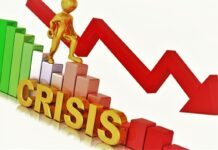Introduction: Setting the Stage for the GCC’s Role in Global Value Chains
As the global economy becomes increasingly complex and dynamic, global value chains (GVCs) have emerged as a key driver of growth, resilience, and sustainability. With the Middle East region’s strategic location and strong infrastructure, including ports and airports, the Gulf Cooperation Council (GCC) countries are well positioned to benefit from this opportunity. Moreover, the region boasts a plentiful and cost-competitive supply of green energy, adding to its appeal as a destination for global investment.
Factors Shaping the GVC Landscape: Navigating a Changing Terrain
Multiple factors are reshaping the GVC landscape, including supply chain disruptions, energy price volatility, environmental sustainability imperatives, and net-zero ambitions. In response, government regulations are transforming supply chains, with Europe and the US recently announcing acts to reshape GVCs for global manufacturers.
Competitive Advantages of the GCC Region: Harnessing its Potential
The GCC is in a strong position to become a global center for GVCs, particularly those that are energy or carbon-intensive. With its comparatively low energy production costs and stable electricity tariffs and gas prices, the region can leverage its strengths to attract global industries. By 2030, the GCC is projected to produce 12.2 million tonnes of green hydrogen annually, which it can use to develop circular and green manufacturing clusters, rather than exporting hydrogen.
Priority GVCs for the Region: Identifying Key Areas of Focus
The GCC has identified 11 priority GVCs, including silicon wafers, recycled plastic, green steel, and precision fermentation. Manufacturing these products in the GCC could generate $300 billion in foreign direct investment, create 150,000 jobs, and unlock $25 billion annually in non-oil exports.
Steps to Seize the Opportunity: Collaborative Efforts for a Shared Future
To capitalize on the opportunities presented by GVCs, GCC governments must work collaboratively to develop agile, resilient, and sustainable GVCs. Targeted measures must be implemented for each priority GVC component, including financial incentives, vocational training, and reskilling initiatives. In addition, governments can fund innovation efforts and develop circular, technology-enabled industrial cities and special economic zones centered on priority sectors.
Private Sector Involvement in GVCs: Opportunities for Partnership
Private sector companies in the GCC can pursue joint ventures and partnerships with OEMs and their tier one suppliers in the 11 major product categories. This would make low-risk investments through technology transfer and technical offtake arrangements.
Conclusion: The GCC’s Potential as a Global Leader in GVCs
As companies worldwide seek to redesign their GVCs and identify new opportunities, the GCC has a unique opportunity to become a hub for GVCs across industries, leading to significant economic development and diversification. By leveraging its competitive advantages, developing targeted measures, and engaging in collaborative efforts, the GCC can generate foreign direct investment, create jobs, and unlock non-oil exports while reducing carbon emissions. In addition, sovereign wealth funds (SWFs) can play a significant role in ensuring a secure and steady supply of critical raw materials needed for key sectors. By investing in large mining companies, SWFs can guarantee local companies have a reliable supply, given the limited availability of such metals in the region. The time to act is now.
Google News | Telegram
















